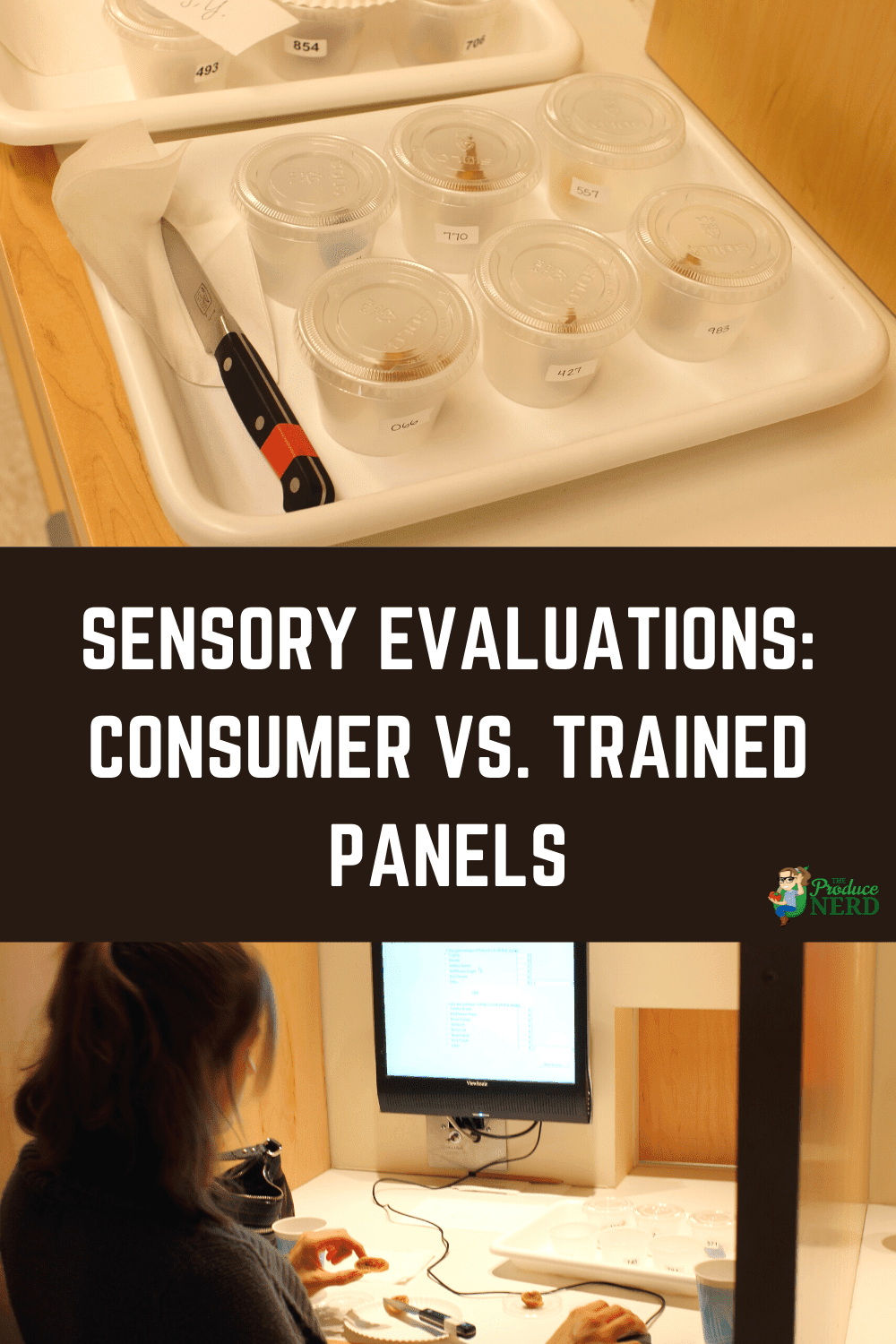Sensory evaluations are performed when introducing a new product onto the market, when deciding how to alter a product, when deciding how to market a product, etc. They can be very useful and are not only used with processed goods. They are also used with different types of fresh and dried fruit, through the use of consumer panels and trained sensory panels.
Table of Contents
What is a Sensory Evaluation?
A sensory evaluation consists of measuring human sensory reactions to products. This includes measuring and analyzing the sight, smell (aroma), irritation, taste, texture/mouthfeel and sound of what they are analyzing. Since everyone has unique taste buds and taste things differently, this can prove to be challenging at times.
The two main types of sensory evaluations that are performed are consumer panels and trained panels. Below, is an explanation of the difference between the two, as well as some example panels that I helped with while in graduate school. These are really fun to be a part of, both as the person putting it on and as the person participating!
What is a Consumer Sensory Panel?
Consumer panels are performed to determine consumer preferences. These tests are performed with completely random people. They can also tell you if consumers can distinguish the difference between different variations of the product. You might have noticed these set up in grocery stores. This sort of experiment can be performed for something as simple as changing food coloring from artificial to natural to see if the consumer can taste the difference. It can also be performed using different variations of fresh and dried fruit.
When I was studying at UC Davis, one of my lab mate’s was working on a mango ripening project and was testing different ripening methods under different temperatures. As part of this project, she also performed consumer panels to see if:
- Consumers could taste the difference between the different methods used
- If there was a preference towards a specific method used
In addition to the consumer panels, there was also data gathered on the skin and flesh color, sweetness (SSC), acidity (TA) and firmness of the mangoes. At the end of the experiment, all of the data could be used to determine which type of mango was preferred and why.
What is a Trained Sensory Panel?
Trained panels are used to determine and distinguish differences between product variations. While consumer panels seek to determine consumer preference, trained panels do not. All panelists that participate in trained panels receive the same training and understand the descriptors being used. After receiving the training (as a group or individually), panelists should be able to discriminate differences between products, describe the different product attributes (qualitatively), and scale the intensity of the attribute (quantitatively). A trained panel is successful when the panelists can determine the differences, reproduce their same results, and be consistent with the rest of the trained panel. The testing environment is also different compared to a consumer panel. In this case, the panelists need to be in a controlled environment, with specific lighting, temperature and booths.
Specific Example: Dried Fig Trained Sensory Panel
As part of my Master’s project, I performed a dried fig sensory project using a trained panel. This project was done in collaboration with the California Fig Association because they were trying to increase the consumption of California grown figs and wanted specific quality characteristics for the different fig cultivars that they could use for their marketing materials. As part of this project, I trained a small group of panelists to be able to:
- Characterize different dried fig cultivars based on flavor and quality measurements
- Find differences between the quality characteristics of the different fig cultivars
The total participation in the trained panel resulted in one week of training, with two weeks of tasting. During the tastings, there were six samples to be tasted per day, three days per week.
In addition to the trained panels, there was also data gathered on the skin and flesh color, ostiole size, skin thickness, sweetness (SSC), acidity (TA) and firmness of the dried figs. (Learn more about the specifics of these fig measurements here.) At the end of the experiment, all of the data was used to provide descriptors for each type of dried fig cultivar (see below) that was included in the experiment.
The most important part of a sensory evaluation is making sure that the fruit is served at the proper ripeness stage! You can learn more about how to select figs and 34 other common produce items by downloading the free table below!
You can click here to read more about the dried fig sensory project in its entirety.
Are you Interested in Participating in Sensory Evaluations?
If any of you are interested, I encourage you to look around in your area. See if there are any local universities or sensory labs in your area. They are always looking for participants, and they normally give out goodies for participating!
If you enjoyed this post, you might also like:


Bonsoir curieuse de découvrir